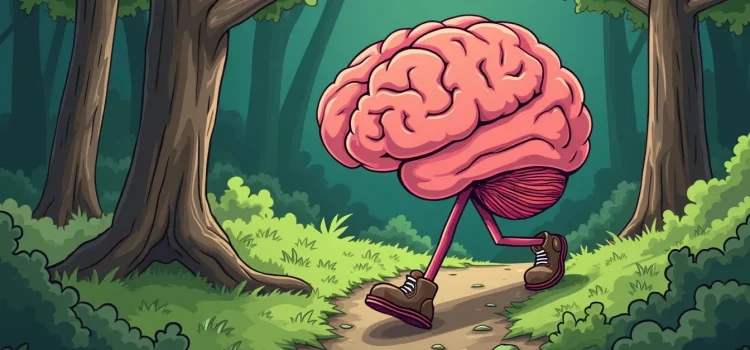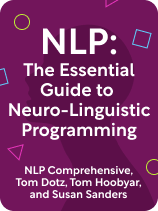

This article is an excerpt from the Shortform book guide to "NLP: The Essential Guide to Neuro-Linguistic Programming" by Tom Hoobyar, Tom Dotz, and Susan Sanders. Shortform has the world's best summaries and analyses of books you should be reading.
Like this article? Sign up for a free trial here.
What happens when your brain processes constant input from your environment? How do mental shortcuts influence the way you perceive reality?
Mental shortcuts help your brain manage the nonstop flow of complex information from your surroundings. Three of these automatic processes—simplifying, filtering, and modifying—shape how you interpret experiences and make decisions, often without your awareness.
Keep reading to discover three common mental shortcuts and how they impact your daily life.
3 Common Mental Shortcuts
Beneath your conscious awareness, your brain continually collects, organizes, and stores data to help you understand and interact with your environment—this process defines how you think at any given moment. However, due to the constant influx of complex data, your brain doesn’t record an exact replica of what’s happening in your environment. Instead, it relies on mental shortcuts to quickly and efficiently manage this process. This means that your thoughts about your experiences aren’t based on accurate reflections of reality but rather on how your brain has synthesized the data from these experiences.
(Shortform note: Psychologists expand on what mental shortcuts are and why your brain relies on them to process your experiences. These shortcuts, also known as cognitive biases, are automatic, unconscious assumptions you make about yourself, situations, and other people. Without these assumptions, you’d have to consciously process a constant flow of information, leading to information overload and mental fatigue. )
According to Hoobyar, Dotz, and Sanders, three of the most common mental shortcuts include simplifying, filtering, and modifying. Let’s explore how each of these shortcuts impacts how you think about your experiences.
Mental Shortcut #1: Simplifying
The authors explain that your brain generalizes the data from your environment by identifying patterns based on your existing knowledge and memories. It does this to reduce the complexity of the external world to manageable, understandable pieces of information.
For example, when encountering a large dog on the street, your brain rapidly sifts through masses of complex data—such as the dog’s breed, size, color, whether it’s on a leash, or if there are other people nearby. Instead of processing each of these details individually, your brain uses your existing memories to quickly simplify the situation. If you were once bitten by a large dog, your brain might simplify this encounter by assessing the dog as a threat.
(Shortform note: Jennifer Eberhardt (Biased) explains that generalizations are the product of your natural impulse to divide all your thoughts, feelings, and experiences into categories. You unconsciously rely on these categories to make sense of the world—instead of observing every detail about a person or situation, you make assumptions about them based on their category, and these assumptions define what you notice. Eberhardt warns that the assumptions you form can create blindspots in your perception, causing you to unknowingly form inaccurate or unfair judgments about other people or cultures. She suggests that becoming aware of and challenging assumptions is key to overcoming prejudice and discrimination.)
Mental Shortcut #2: Filtering
Your brain decides what it should process and what it should discard based on what’s relevant to your immediate needs, interests, and goals. According to the authors, factors such as your emotional state, physical condition, expectations, and what you’re focusing on at that moment can all influence this decision. For example, because you feel threatened by the dog, your brain focuses on the dog’s size and bark, filtering out other details like its wagging tail.
| Filtering Helps Focus Your Attention John Medina (Brain Rules) expands on why and how your brain filters information: It helps you focus your attention on one thing at a time. He explains that, at any given time, there are millions of sensory neurons carrying messages to your brain, each competing for your attention. Your brain needs to filter this information—otherwise, so many things would be competing for your attention that it’d be difficult to focus on any one. However, while the authors state that your immediate needs, interests, and goals determine what your brain filters, Medina suggests that stimuli in your environment influence this decision. He explains that environmental stimuli influence what your brain filters through a process controlled by three neural networks, which are activated consecutively: The first is the alerting network. This detects notable stimuli and initiates the filtering process. For example, if you encounter a dog, your alerting network will register its presence. The second part is the orienting network. This processes information about the stimulus, helping to determine which details are relevant. For example, if you’re afraid of dogs, you might focus on the dog’s size, while filtering out the color of its fur. The third part is the executive network. This dictates how you respond to the stimulus. For example, because you focused on the dog’s threatening features, you might then find an escape route. |
Mental Shortcut #3: Modifying
Hoobyar, Dotz, and Sanders suggest that your brain also modifies the data so that it aligns with your existing knowledge and beliefs, making it easier for you to quickly interpret and understand new experiences. For example, if you once had a bad experience with a dog, your brain might exaggerate the size or aggressiveness of the dog in front of you, altering your perception based on your preconceptions.
(Shortform note: Cognitive scientists explain that this modification process, otherwise known as top-down processing, offers two advantages: First, it allows your brain to fill in missing details when faced with incomplete or unclear information. Second, it helps you anticipate and prepare for potential outcomes in a situation.)

———End of Preview———
Like what you just read? Read the rest of the world's best book summary and analysis of Tom Hoobyar, Tom Dotz, and Susan Sanders's "NLP: The Essential Guide to Neuro-Linguistic Programming" at Shortform.
Here's what you'll find in our full NLP: The Essential Guide to Neuro-Linguistic Programming summary:
- How your thoughts form and impact you
- Why it’s difficult to control your thoughts
- The role senses play in your thoughts






